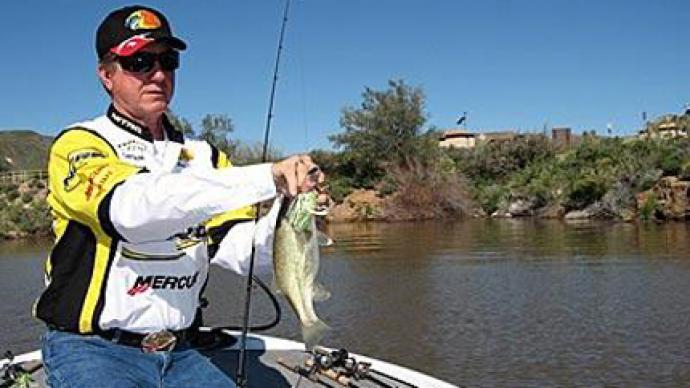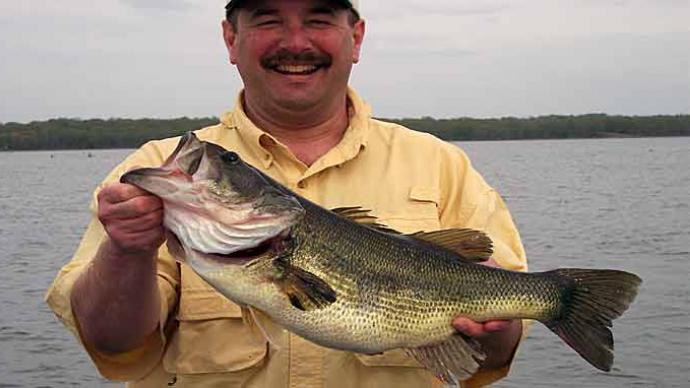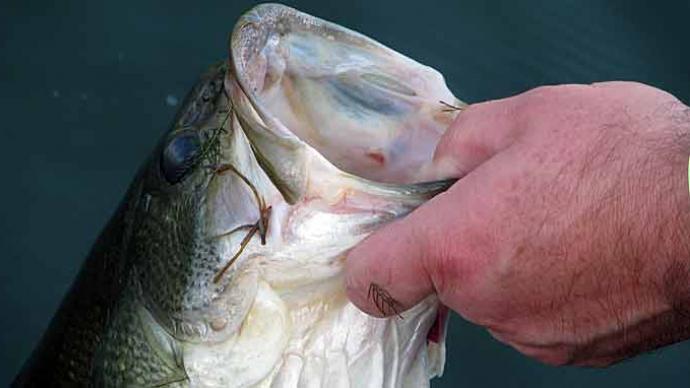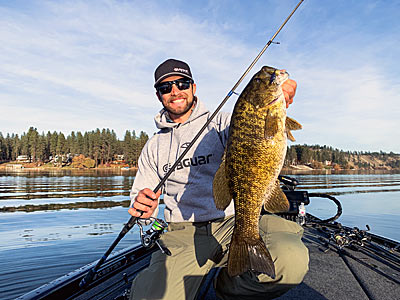
The blade bait is one of the simplest lures available to bass anglers, and each winter, bass anglers everywhere pull them out as they work when most lures don’t get a bite. Major League Fishing pro Brandon Palaniuk won’t go fishing in the winter without them, and over the years, he has learned a few tricks to put more blade bait bass in the boat.
When to Go Metal
Many bass anglers reach for blade baits when the water gets cold, and Palaniuk is no different. He thinks about the blade bait bite when the water temperature dips into the low 50s but adds that they can work all year long.
“It is low 50s and down into the ’30s if your water gets that cold. Where I live in the Northwest, we have some lakes that are cold but don’t quite freeze, and those are places I will always pick up a blade bait,” shared Palaniuk, who added that it goes against standard thinking that you have to fish slowly when the water is that cold.
“Blade baits don’t follow the rule book. You think cold water and automatically think you need to slow down or drag something on the bottom,” said the Idaho pro. “It is a little slower, but simultaneously, you can trigger a reaction strike. I have learned that metal baits like a blade bait and spoon outperform everything, even soft plastics when the water is frigid.”
Picking the Right Blade Bait
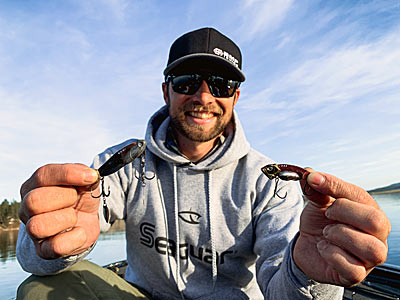
These lures have been made for decades, and many different brands make them. Palaniuk has a few favorites but was quick to add that he keeps it simple.
“My two favorites are the Molix Trago Vib or a Norisada Custom Tackle blade bait. You can fish them at many depths, and if they are up shallow, I usually throw the ½-ounce Trago Vib. For deeper fish, I use the Norisada in 5/8 or ¾ ounce,” said Palaniuk, who has recently been having success with two VMC Bladed Hybrid treble hooks attached to his blade baits. This adds a little extra flash, and Palaniuk says it does not negatively affect the lure's action.
For colors, Palaniuk advises sticking with the basics. “I go with shad hues or plain silver most of the time or will use the old-school plain brass color depending on the conditions and main forage. Another good one is the Norisada Goby color. I don’t get too caught up in the color and detailed finishes because it is less important than the action.”
Blade Bait Gear
For Palaniuk, fishing a blade bait is done exclusively with spinning gear for ease of use and because it is easier to do in freezing air temperatures.
He prefers to fish them on a 7’ medium action Alpha Angler Wrench with a Daiwa Exist spinning reel in the 3000 sizes. “That rod has a soft tip but enough backbone to quickly drive the hook. The fish are not going to hold onto the bait long since it is a hunk of metal, so you need to be quick on the hookset,” he added.
Another critical component is the line he uses, and he says a high visibility line is invaluable for detecting bites.
“I like 15-pound Seaguar Smackdown in the Flash Green color. So many of the bites happen when the line is semi-slack, and you can see your line jump before you feel it with your rod. Often that is the difference between catching them or not,” said Palaniuk, who pairs the braid with an 8 or 10-pound Seaguar Tatsu fluorocarbon leader.
“The stiffness of the fluorocarbon keeps the line from tangling around the hook as much as it would with straight braid, and the braid helps me cast much better. I use an 8-pound leader around sand, grass, and rock edges and switch to 10-pound when fishing jagged rock ledges and big boulders.”
Locations to Fish a Blade Bait
For the most part, Palaniuk likes to fish blade baits around some rocky bottom.
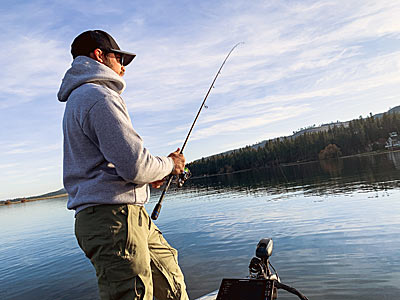
“Generally, I am always fishing around rock. It could be mixed sand and rock, grass and rock, or rock humps and points. The key to fishing the blade bait is to be around fish, and during the winter, they tend to hold around the rock,” shared the Major League Fishing pro.
How Palaniuk Fishes a Blade Bait
Fishing a blade bait is a reasonably straightforward proposition as you lift and drop the bait to generate a vibration.
“The best way to fish them is with a quick lift and drop technique. You will feel the bait vibrating each time you lift, so you know it is working. I experiment with how quickly or how high I lift my rod to see what is working that day,” Palaniuk said. “Most of the time, I do not lift my rod very high before doing it again.”
Detecting bites is one thing that requires a little bit of attention. “Most of the time, they are going to bite right when the bait hits bottom after it falls or as soon as you lift your rod again,” he has learned. “It is those direction changes when it usually happens, and that is why I am always watching my line.”
The simple blade bait has been a cold-water staple for years for anglers chasing bass and all other gamefish. They trigger bites when nothing else seems to be working and can turn a cold day into some of the hottest fishing of the year. Pro bass angler Brandon Palaniuk believes they should have a place in everyone’s arsenal when fishing in frigid water.
BassResource may receive a portion of revenues if you make a purchase using a link above.


